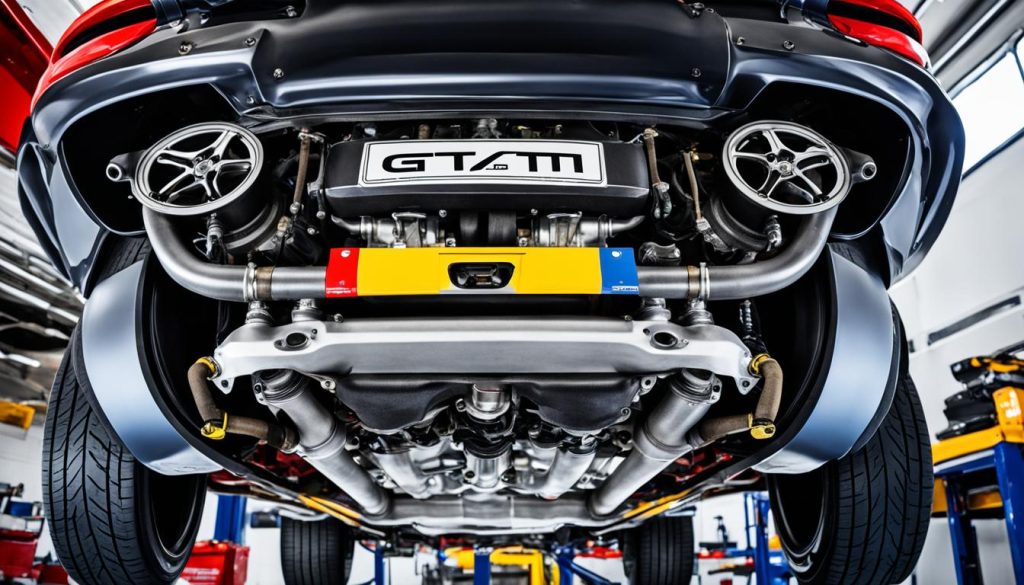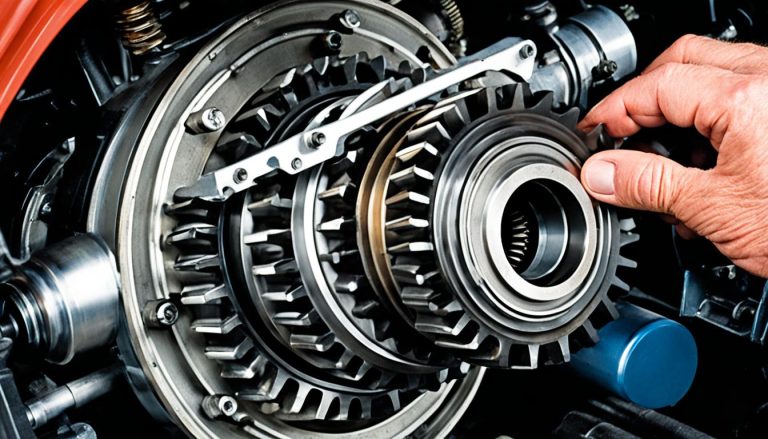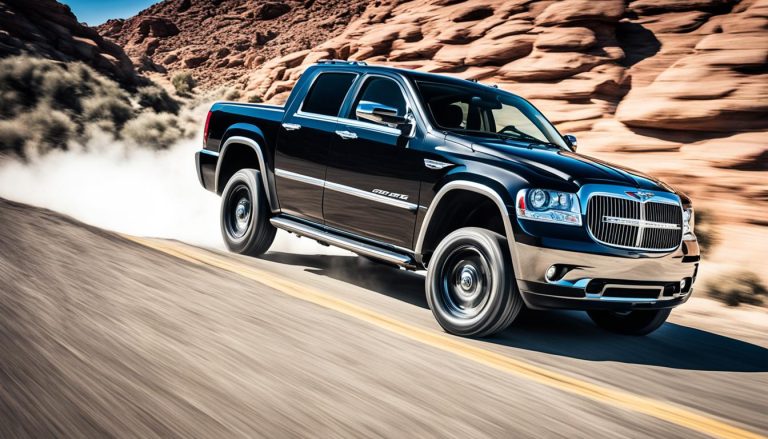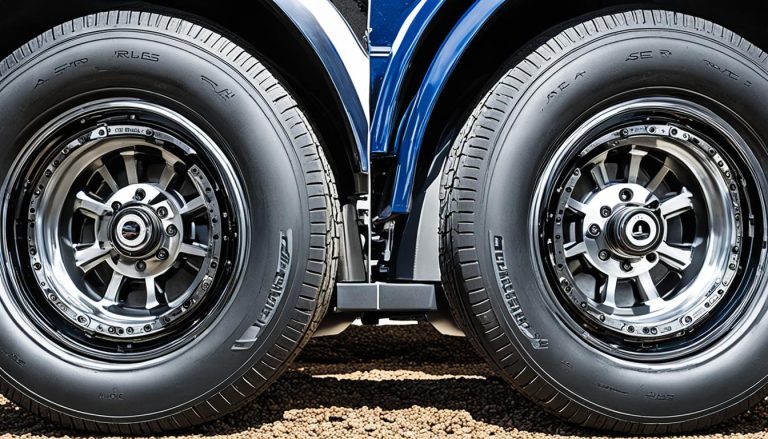GT4 Rear End: Is It Limited Slip? Discover Now
When you’re behind the wheel, the nuances of your vehicle’s mechanics significantly impact your driving experience. If you’ve heard the term ‘GT4 rear end’, you may wonder—is a GT4 rear end limited slip? This question isn’t just technical jargon; it pertains directly to the handling and performance driving capabilities of your car. The GT4 designation does pinpoint a specific gear ratio, a 3:73, known for its balance between power and efficiency. However, to discern if your GT4 rear end operates with the advanced mechanics of a limited slip differential, you’ll need to look beyond the initial code.
An essential piece of automotive differentials, a limited slip system offers superior torque management, specifically under challenging conditions where traction is key. Without it, you might not be fully utilizing the potential of your GT4 rear end. Let’s delve into the markers that define your differential type and how to ensure your vehicle lives up to your performance driving aspirations.
Key Takeaways
- Understand that ‘GT4’ signifies a gear ratio, not necessarily a limited slip differential type.
- A limited slip differential can greatly enhance handling and traction, especially beneficial in performance driving scenarios.
- Identifying whether you have a GT4 rear end requires checking your vehicle’s RPO codes.
- To confirm the presence of a limited slip differential, look for the ‘G80’ RPO code alongside ‘GT4’.
- An open differential, which may come with a GT4 rear end without a G80 code, differs markedly in performance from a limited slip differential.
- Considering a conversion can significantly upgrade your driving experience if your GT4 rear end isn’t currently limited slip.
Understanding the Basics of GT4 Rear End and Limited Slip Differential
When you peer under your vehicle to examine the mechanisms that make it tick, you’re engaging with the complex world of automotive mechanics. A crucial component of this system is the GT4 rear end, a term you might have come across when reviewing your vehicle’s specifications.
Defining the GT4 Rear End
The GT4 code, prominently displayed on your vehicle’s RPO sticker, is your key to understanding the gear ratios at play within your automotive’s drivetrain. Specifically, the GT4 designation equates to a gear ratio of 3:73, a middle ground that many manufacturers choose for an optimal balance between aggressive performance and commendable fuel efficiency. This setup is often employed to enhance vehicle stability and response under various driving conditions.
Functionality of Limited Slip Differentials
The limited slip differential (LSD) is engineered to revolutionize the way your vehicle handles power distribution. Unlike conventional open differentials, the LSD responds dynamically to changing driving conditions, apportioning torque to the wheel with increased resistance—therefore, the one that can make the best use of it. It’s a seamless system that dials up your vehicle’s traction control and vehicle dynamics, mitigating wheel spin and fortifying grip when you need it most, such as during acceleration or while negotiating a tight curve.
In essence, the collective operation of the GT4 rear end in concert with a limited slip differential can provide a significant uplift to how a vehicle handles, feels, and performs. Whether you’re a casual driver looking for a safe and stable ride or an enthusiast craving for performance enhancements, the synergy between these elements cannot be overstated. By delving into the mechanical symphony that unfolds within the rear end of your vehicle, you gain a deeper appreciation and control over your driving experience.
Decoding Your Vehicle’s RPO Codes: GT4 and G80 Explained
If you’re a car enthusiast or someone deeply involved in the automotive community, RPO codes are a critical aspect of vehicle identification and understanding the original build specifications of your vehicle. When it comes to the GT4 rear end swap or even a simple upgrade, it’s crucial to understand what these codes signify and how they impact your vehicle’s performance.
The GT4 code is particularly noteworthy, indicating a rear-end gear ratio of 3:73, optimizing your vehicle for a blend of performance and efficiency. On the flip side, a G80 code on your automobile points towards the inclusion of a locking differential mechanism, which might be a Gov-lock or an Eaton locker, providing enhanced traction in varying driving conditions.
Before you jump into the intricate plan of a GT4 rear end swap, it’s essential to note the compatibility of the automotive specifications. Below are key aspects you should consider:

- Gear Ratio Compatibility – The GT4’s 3:73 has to match with your vehicle’s performance needs.
- Spring Perch Alignment – Ensures that the new rear end fits perfectly with your vehicle’s suspension set-up.
- RPO Code Clarity – All codes should be referred to for a comprehensive overview of your vehicle’s specs.
With this knowledge, you’ll be empowered to make informed decisions about potential mods, ensuring a smooth transformation of your vehicle’s dynamics. So remember, understanding the secret language of RPO codes is the first step to unlocking your car’s full potential.
Is a GT4 Rear End Limited Slip?
When diving into the specifications of a GT4 rear end for a Camaro or other vehicles, you’ll often find yourself wondering whether it includes a limited-slip feature. The GT4 designation points just to the gear ratio, a piece of critical information for understanding your car’s torque management system. But let’s clear up some confusion: owning a GT4 rear end does not inherently mean you have a limited-slip differential.
Those who seek enhanced performance understand the value a GT4 rear end limited slip differential can add, especially in scenarios demanding superior traction and power distribution. For clarity, let’s compare the different differential types that could be associated with a GT4 rear end:
| Differential Type | Function | Benefits | GT4 Compatibility |
|---|---|---|---|
| Open Differential | Distributes power equally to both wheels, allowing them to spin at different speeds. | Simple, cost-effective | Yes |
| Locking Differential (G80) | Locks both wheels together when a significant speed difference is detected. | Improved traction in uneven conditions | Yes, if RPO code includes G80 |
| Limited Slip Differential | Delivers more torque to the wheel with the most resistance, minimizes wheel spin. | Better handling and cornering performance | Possible with modification |
Note: Applying a GT4 rear end limited slip differential to your Camaro or other vehicle might require an aftermarket upgrade. It’s an investment that can significantly improve your torque management and overall driving experience.

“Investing in a limited slip differential for your GT4 rear end can transform your vehicle’s handling, particularly in high-torque scenarios.”
Whether it’s a casual cruise or competitive racing, the right differential alters the dynamic by which power is delivered to the road. Understanding differential types and making informed decisions on upgrades are fundamental for any performance-focused driver.
Identifying GT4 Rear End and Limited Slip Features in Your Vehicle
If you’re curious about enhancing your vehicle’s performance, identifying the type of rear end it possesses is crucial. You might be contemplating a gt4 rear end conversion or simply assessing your current setup. Your vehicle’s RPO codes are your treasure map here, with the GT4 code marking the spot for gear ratios, but that’s only the beginning of the journey. Whether you’re browsing gt4 rear ends for sale or considering performance modifications, the presence, or absence, of the limited slip differential signs will lead you to the potential of a traction advantage.
How to Spot a GT4 Rear End
Spotting a GT4 rear end in your vehicle starts with a simple check of the RPO codes. Found often in the glove compartment, a quick look can confirm whether you possess this gear ratio. Bear in mind that if you’re weighing the prospect of an upgrade, various gt4 rear end upgrade kits are available in the market. Always consult a professional for a thorough inspection to avoid any mismatch in compatibility with your vehicle’s specs.
Recognizing the Signs of a Limited Slip Differential
On discovering whether your GT4 has the coveted G80 code, you’ll know for sure that it’s equipped with a limited slip differential. This feature facilitates differential performance at a higher level by ensuring consistent power across both wheels on an axle, critical in tight turns or challenging conditions. If you’re missing the G80 RPO code but seeing balanced power during such maneuvers, it may be time to consider a limited slip differential as part of your next vehicle upgrade for a notable boost in handling and stability wherever your journeys take you.
FAQ
Defining the GT4 Rear End
The GT4 rear end refers to a specific rear-end gear ratio of 3:73, which is a configuration aimed to provide a balance between acceleration, performance, and fuel economy in a vehicle. This term does not inherently indicate the type of differential used.
Functionality of Limited Slip Differentials
A limited-slip differential (LSD) helps to improve traction on various surfaces by distributing power to the wheels in a way that compensates for one wheel spinning faster than the other. This type of differential will provide balanced power to both wheels while allowing them to rotate at different speeds when necessary, significantly improving vehicle stability and handling.
Regular Production Option (RPO) codes are used to identify specific equipment or features your vehicle was originally built with. The GT4 RPO code indicates your vehicle has a 3:73 gear ratio, whereas the G80 code refers to the presence of a locking differential, which might also be referred to as a limited-slip differential.
The GT4 rear end, by itself, does not confirm that your vehicle has a limited-slip differential. The presence of a GT4 code specifies only the gear ratio. A true limited-slip differential is typically signified by other codes, such as the G80, which indicates a form of traction control differential.
How to Spot a GT4 Rear End
You can spot a GT4 rear end by checking the RPO codes in your glove box or service compartment. If GT4 is listed, your vehicle has that particular gear ratio. It is part of how your vehicle’s powertrain was designed to balance performance and efficiency.
Recognizing the Signs of a Limited Slip Differential
Recognizing a limited-slip differential in a GT4 rear end requires locating the G80 code among your RPO codes or noticing your vehicle’s improved traction during acceleration or cornering, which suggests that power is being efficiently distributed to both wheels, even when one starts to slip.
What is a GT4 rear end?
A GT4 rear end is a term used to describe a vehicle’s rear-end gear ratio of 3:73, which aims to balance performance and fuel economy. It does not automatically denote the presence of a limited-slip differential.
Can a GT4 rear end be equipped with a limited-slip differential?
Yes, a GT4 rear end can be equipped with a limited-slip differential, but it is not implied by the GT4 code alone. The presence of a G80 code alongside GT4 would indicate such a feature.
How do I know if my vehicle has a limited-slip differential?
You can determine if your vehicle has a limited-slip differential by checking for the G80 RPO code in your vehicle’s documentation, or by observing the vehicle’s behavior during situations that require traction, such as when driving on slippery roads or during tight cornering.
Is it possible to upgrade my GT4 rear end to a limited-slip differential?
Yes, you can upgrade your GT4 rear end to include a limited-slip differential. There are upgrade kits and professional modifications available that can help enhance your vehicle’s traction and performance.
What is the advantage of having a limited-slip differential with a GT4 rear end?
A limited-slip differential with a GT4 rear end provides better traction control by distributing power evenly to both wheels, especially in low-grip situations. This improves stability, performance, and safety during driving maneuvers such as acceleration and cornering.
Where can I find GT4 rear end parts for sale?
GT4 rear end components can be purchased through auto parts retailers, specialty car part suppliers, online marketplaces, or at dealerships that specialize in the type of vehicle you’re upgrading or repairing.
Can I perform a GT4 rear end swap myself?
While it is possible for a knowledgeable individual to perform a GT4 rear end swap, it requires a good understanding of automotive mechanics and access to the correct tools. It is often recommended to have a professional perform such a swap to ensure it is done safely and correctly.






